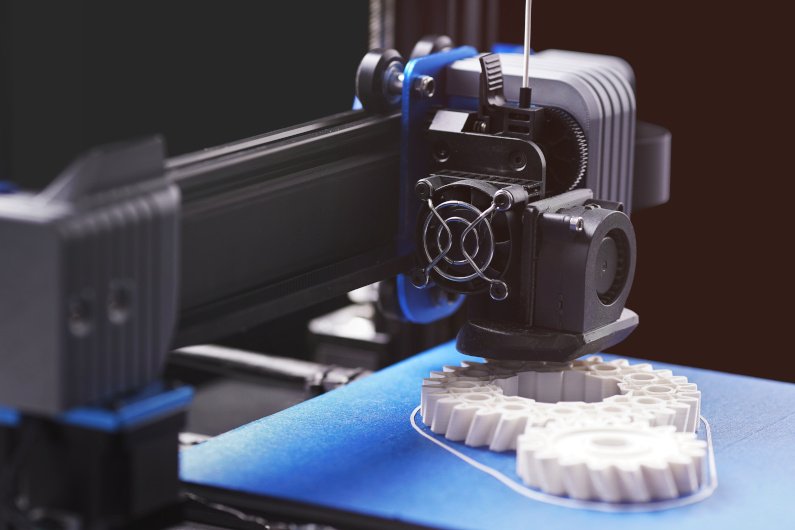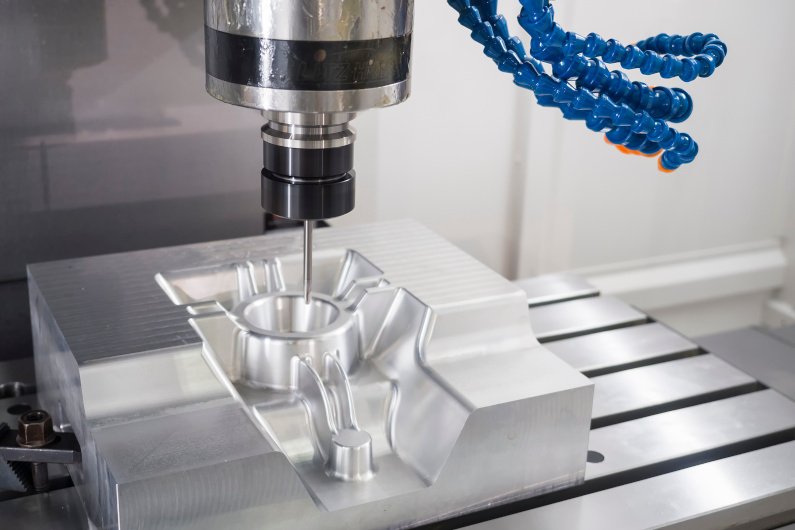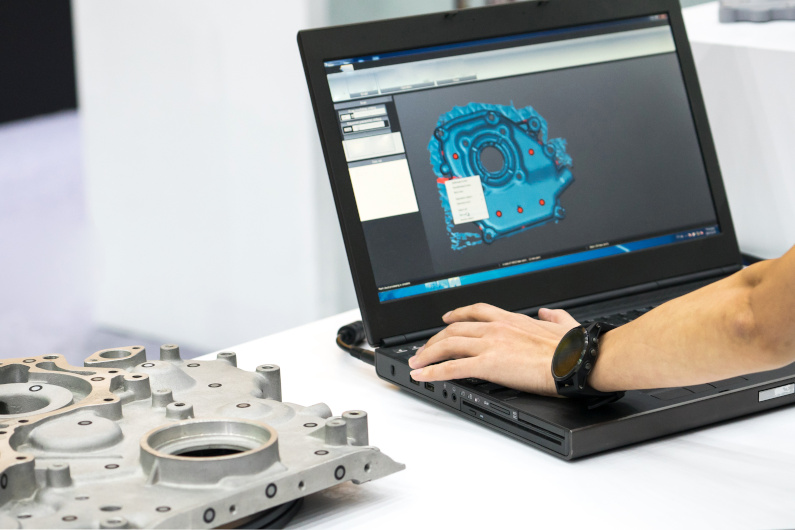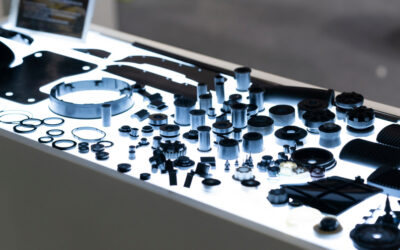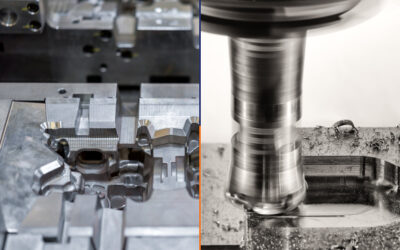Additive and subtractive manufacturing are certainly not the most commonly used terms. But you’ve definitely heard of processes related to them before. CNC machining, laser engraving, and 3D printing all fit under one of these two umbrella terms.
The biggest difference between additive and subtractive manufacturing processes lies in the way that they turn raw material into finished products. This article compares what makes these two types of manufacturing different, what makes them the same, and when you should use each.
What is Additive Manufacturing?
It generally refers to any manufacturing process where raw material is selectively added to a part in consecutive layers to create a finished object. Additive manufacturing is often used interchangeably with 3D printing and rapid prototyping (even though rapid prototyping can also include other processes).
The processes that fall under additive manufacturing are typically great for quickly producing small parts with complex geometries. These processes are classified into 7 subtypes of additive manufacturing as follows:
- Vat Photopolymerization
- Material Jetting
- Binder Jetting
- Material Extrusion
- Powder Bed Fusion
- Sheet Lamination
- Directed Energy Deposition
While each of these types of additive manufacturing uses slightly different methods to meet specific production needs, they all work by using computer-controlled tooling to build products in layers. Overall, additive manufacturing is a relatively new process for quickly fabricating products and model prototypes that are small and have complex geometries.
What is Subtractive Manufacturing?
With the new arrival of additive manufacturing techniques, a term was needed to distinguish other part-shaping processes that removed material instead of adding it. Subtractive manufacturing is actually a retronym based on additive manufacturing. It describes a collection of processes that use the selective removal of material to “carve out” features on products to refine them into a finished state.
There are many unique processes under the subtractive manufacturing umbrella, which are sometimes distinguished as either conventional or unconventional machining processes. Conventional machining equipment refers to milling machines, lathes, bandsaws, and basically anything that satisfies the traditional definition of “machining.”
Unconventional machining on the other hand encompasses more recent machining methods, like waterjet cutting, electrical discharge machining (EDM), and laser cutting or engraving.
Overall, subtractive manufacturing represents a diverse group of technologies for fabricating a wide range of products in all sizes.
Comparing Additive and Subtractive Manufacturing
Now that we’ve covered what additive and subtractive manufacturing are, it’s helpful to know a bit more about their strengths and shortcomings. While the best method for a task is highly case-by-case dependent, the following information represents general trends for each type of manufacturing.
1) Product Design Complexity
Broadly speaking, 3D printing can accurately create more complex designs than almost any other production method. It can even be used to create enclosed and isolated internal features. CNC machining and other subtractive manufacturing processes can still make an impressive range of intricate features, but they can’t match the capabilities of additive manufacturing.
2) Production Batch Size
Thanks to modern CNC capabilities, both additive and subtractive manufacturing have seen use in the large-scale production of consumer products. Likewise, custom, individual pieces can also be efficiently made using either process. That said, additive manufacturing is often the preferred process for the rapid prototyping of small model parts, while subtractive manufacturing is often faster when it comes to mass production.
3) Finished Quality
There are a lot of factors that affect finished part quality. Everything from the capabilities of specific machinery to the material used for the workpiece has an impact. Most people think that 3D printing produces a rougher surface finish than machining, but this is highly dependent on the methods being used. While material extrusion produces distinct ridges, technologies like vat photopolymerization (also known as stereolithography) create a much smoother surface.
Another concern sometimes raised with 3D printing technologies can be structural integrity issues caused by voids within the part. This is once again something that can occur in certain additive manufacturing processes, like the 3D printers used by hobbyists, but other methods can easily produce uniform parts.
Overall, if you’re looking for high precision and excellent finished quality, talk with a reputable producer to better understand your options. They can explain the capabilities of different machinery and help determine what processing and finishing steps are needed to meet your production needs.
4) Materials Options
While additive manufacturing can accommodate a growing range of materials, it simply cannot match the capabilities of subtractive methods. Different 3D printing machinery can be used with an assortment of plastics and a few metals. But you can find a viable subtractive manufacturing process for almost any solid material or composite you can think of.
5) Part Size Capabilities
Part-sizing is highly machine-specific, but most commercially available 3D printers have a comparatively small working area. For part fabrication, machine shops will almost always be able to accommodate larger parts than a 3D printer. The biggest exception to this is when it comes to large-scale additive manufacturing, which can be used to “3D print” buildings and other infrastructure.
6) Waste Production & Sustainability
When it comes to waste, subtractive manufacturing will always generate a lot of scrap material. There are typically also more manufacturing steps and energy expenditures along the entire product lifecycle of machined parts. Additive manufacturing is almost always a more environmentally-friendly option, but you’ll need to consider the specifics of any process to ensure it is the best choice in your application.
7) Other Qualities
While the details in the previous sections helped elaborate on the typical capabilities of both additive and subtractive manufacturing, there are likely a lot of other factors you’ll want to consider. The cost to produce, fabrication time per part, need for supportive ancillary systems, and labor experience to name a few.
Unfortunately, you’ll need to delve into specific processes and their workflows to determine that information. The performance variance of processes within each category of manufacturing technologies will often be greater than the differences between additive and subtractive manufacturing.
So Which Type of Manufacturing Should You Use?
Unfortunately, you likely won’t be able to determine the best process workflow for your next product based on this article alone. Differences in precision tolerances, surface finish, production cost, material compatibility, and more will impact the suitability of each unique manufacturing process for your project. Waterjet cutting and CNC lathes are both subtractive manufacturing processes, but they offer very different capabilities.
At Gensun, our skilled team of experts can leverage a wide assortment of additive and subtractive manufacturing equipment to help you meet your production needs. We offer both precision CNC machining services and rapid prototyping services to meet all of our customer’s fabrication needs.

